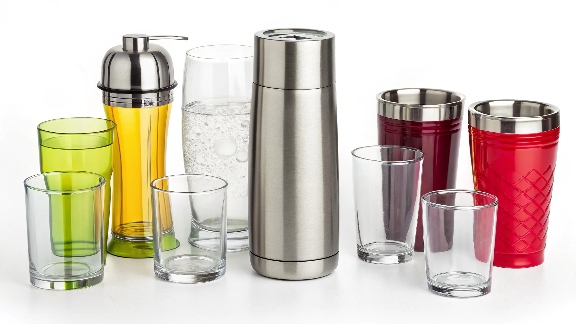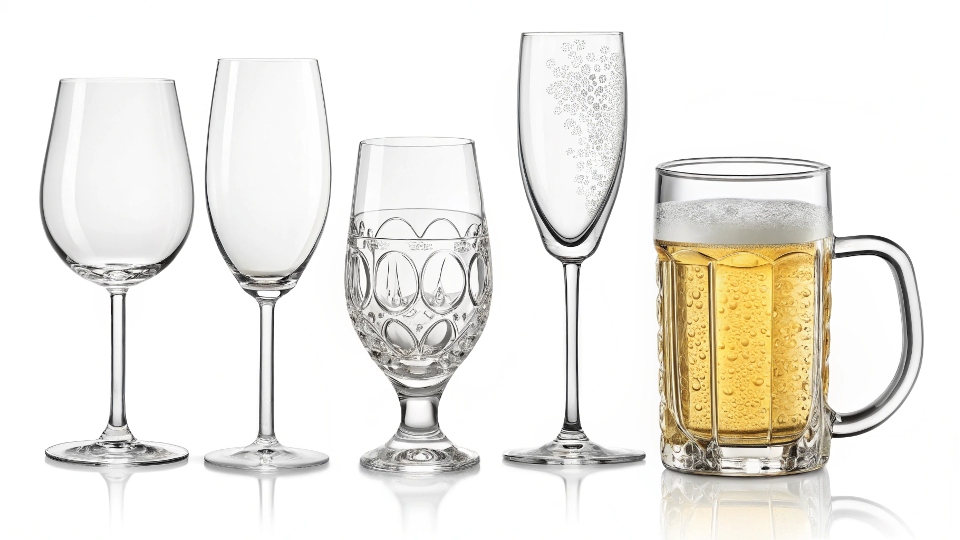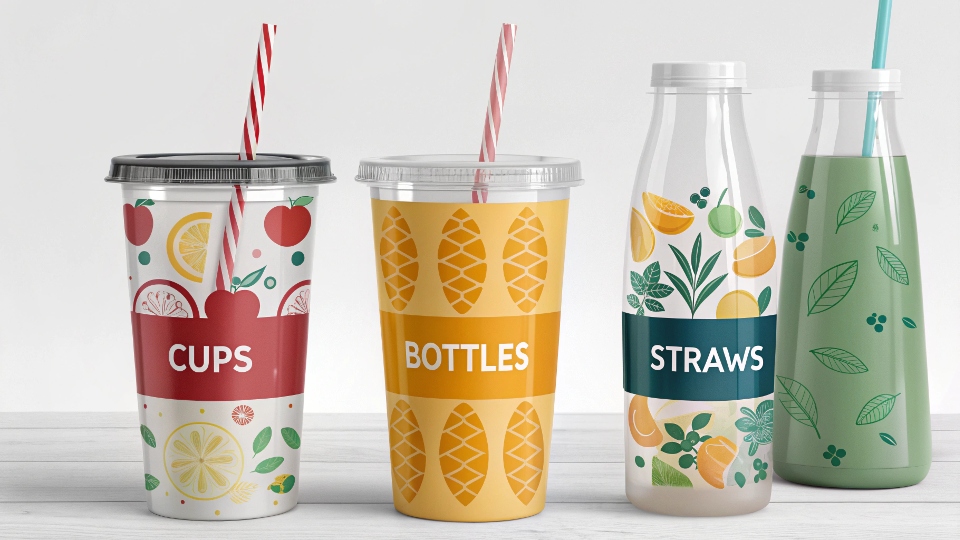
The global drinkware market has reached an impressive $12.8 billion in 2024, presenting unprecedented opportunities for savvy importers and wholesalers. However, success in this competitive landscape hinges on one critical decision: choosing the right material for your target market. The difference between stainless steel, glass, and plastic drinkware extends far beyond aesthetics—it can impact your profit margins by 30-50% and determine your long-term market positioning.
For international wholesalers entering or expanding in the drinkware market, understanding the complete cost implications of material selection is essential. This comprehensive analysis will guide you through the strategic considerations that separate successful importers from those struggling with thin margins and operational challenges.
Material Properties & Market Positioning
Stainless Steel Drinkware: The Premium Choice

Stainless steel drinkware represents the premium segment of the market, with 304 and 316 grades offering distinct advantages. The 304 grade provides excellent corrosion resistance for general use, while 316 grade offers superior performance in harsh environments. Double-wall insulation technology has revolutionized this category, delivering temperature retention that can keep beverages hot for 12+ hours or cold for 24+ hours.
The durability factor sets stainless steel apart—with a lifespan exceeding 15 years under normal use, these products position themselves in premium market segments. Corporate gifting, promotional products for upscale brands, and the growing outdoor/sports enthusiast market represent the primary target demographics. The perceived value allows for higher markup margins and stronger brand positioning.
Glass Drinkware: Balancing Quality and Aesthetics

Glass drinkware occupies the mid-to-premium market position, with borosilicate glass offering superior thermal shock resistance compared to traditional soda-lime glass. The material’s inert properties ensure no flavor transfer, making it particularly appealing to coffee and tea enthusiasts. However, thickness variations significantly impact both cost and breakage rates during shipping and handling.
This material category performs exceptionally well in home/office environments and hospitality markets. The growing eco-conscious consumer segment increasingly favors glass for its recyclability and health safety perceptions. The aesthetic appeal of glass also supports premium positioning in gift markets and specialty retail channels.
Plastic Drinkware: Volume and Versatility

Modern plastic drinkware has evolved significantly beyond basic polypropylene options. Tritan plastic offers clarity rivaling glass while maintaining impact resistance, while specialized BPA-free formulations address health concerns. UV resistance and chemical stability vary significantly across plastic types, directly impacting product longevity and market acceptance.
The lightweight nature of plastic provides substantial shipping advantages, while the material’s versatility enables complex designs and vibrant color options. Primary markets include children’s products, promotional merchandise, and high-volume commercial applications where durability and cost-effectiveness take priority over premium positioning.
Manufacturing & Production Considerations
Understanding production complexity helps importers evaluate supplier capabilities and anticipate quality variations. Stainless steel manufacturing involves multi-stage forming processes, precision welding, and sophisticated finishing techniques. The integration of double-wall insulation technology requires specialized equipment and expertise, limiting the pool of qualified manufacturers.
Glass production demands precise temperature control throughout molding and annealing processes. Surface treatments for enhanced grip or branding add complexity and cost variations. Quality control becomes particularly critical given the material’s fragility and the visual nature of defects.
Plastic manufacturing offers the greatest scalability through injection molding, but color consistency across large batches presents ongoing challenges. Additive integration for UV protection or antimicrobial properties requires careful process control and material expertise.
Ready to evaluate manufacturing capabilities for your drinkware import business? Inoxicon’s technical team can provide detailed capability assessments and production feasibility analysis for your specific requirements.
Shipping & Logistics Optimization
Container loading efficiency varies dramatically across materials, directly impacting per-unit shipping costs. Stainless steel products offer moderate density optimization, allowing efficient space utilization while maintaining reasonable weight distribution. Glass requires extensive protective packaging, reducing container capacity but necessitating higher insurance coverage due to breakage risks.
Plastic drinkware maximizes container space efficiency due to lightweight properties and compact packaging options. However, importers must balance maximum loading with proper cushioning to prevent deformation during transit.
Weight distribution impacts extend beyond simple freight calculations. Container weight limits, port handling capabilities, and final delivery logistics all factor into total shipping costs. Successful importers develop loading patterns optimized for their specific trade routes and handling infrastructure.
Quality Control & Compliance Requirements
International drinkware imports face stringent regulatory requirements that vary by material and destination market. FDA compliance processes for food-contact materials involve extensive documentation and testing, with timeline requirements varying from 3-8 months depending on material complexity and novelty.
LFGB testing for European markets requires additional chemical migration analysis, particularly critical for plastic materials. Temperature cycling tests ensure performance consistency across expected use conditions, while dishwasher safety certifications have become standard market expectations.
Third-party inspection protocols should account for material-specific defect patterns. Stainless steel products require weld integrity checks and surface finish consistency evaluation. Glass products need comprehensive visual inspection and stress testing, while plastic items require dimensional accuracy verification and color consistency assessment.
Ongoing compliance costs include annual certification renewals, batch testing requirements, and documentation maintenance. Smart importers build these recurring costs into their financial planning from project inception.
Market Demand & Pricing Strategy Analysis
Consumer preference trends in 2024 strongly favor sustainability and functionality. The reusable drinkware market continues growing at 18% annually, driven by environmental consciousness and corporate ESG purchasing policies. This trend particularly benefits stainless steel and glass options, which position well as permanent plastic alternatives.
Functionality demands have intensified across all market segments. Temperature retention performance, leak-proof reliability, and multi-use versatility have become baseline expectations rather than premium features. These requirements favor materials with proven performance characteristics and established testing protocols.
Corporate purchasing represents a significant growth segment, with businesses seeking promotional products that align with sustainability messaging while providing practical value to recipients. This market segment typically prioritizes quality consistency and customization capabilities over pure cost optimization.
Exploring market positioning strategies for your drinkware portfolio? Inoxicon offers comprehensive market analysis services to help identify optimal product-market fit for your target regions.

Total Cost of Ownership Analysis
Successful drinkware importing requires a 3-year total cost perspective that extends beyond initial purchase and shipping expenses. Minimum order quantities vary significantly by material, with stainless steel typically requiring higher initial investment but offering better inventory turnover rates through premium positioning.
Working capital requirements differ substantially across materials due to varying lead times, seasonal demand patterns, and replacement rates. Stainless steel products generally exhibit the lowest replacement rates due to durability, while glass products require careful warranty management due to breakage potential.
Storage and handling costs often represent hidden expenses that can significantly impact profitability. Glass products require climate-controlled storage and careful handling protocols, while plastic products may need UV protection during extended storage periods.
Risk assessment must consider supply chain stability, quality consistency, and market volatility exposure. Diversified material portfolios can provide risk mitigation, but require greater management complexity and capital allocation.
Strategic Recommendations for Importers
Market entry success depends on aligning material selection with target market characteristics and business capabilities. Single-material focus allows deeper expertise development and stronger supplier relationships, while diversified approaches provide market flexibility and risk distribution.
Geographic market prioritization should consider regulatory complexity, competitive landscape, and distribution infrastructure. Some markets favor premium positioning opportunities, while others reward volume-based strategies. Understanding these dynamics early prevents costly market entry mistakes.
Supplier selection criteria must emphasize quality system certifications, production capacity scalability, and innovation capabilities. The best manufacturing partners provide comprehensive support including regulatory compliance assistance, customization capabilities, and logistics optimization.
Communication excellence becomes particularly critical in international partnerships. Time zone management, cultural sensitivity, and proactive problem-solving distinguish exceptional suppliers from merely adequate ones.
2024 Market Outlook & Opportunities
Emerging trends in smart drinkware integration present exciting opportunities for forward-thinking importers. Temperature monitoring, hydration tracking, and smartphone connectivity features are gaining market acceptance, though adoption rates vary by material type and target demographic.
Customization demand continues expanding beyond simple logo application. Advanced personalization technologies enable unique designs, color combinations, and functional modifications that support premium positioning and customer loyalty.
Market consolidation trends create opportunities for strategic partnerships and private label development. Established importers with proven track records can leverage these relationships for exclusive territory rights and co-development opportunities.
Ready to capitalize on emerging drinkware market opportunities? Contact Inoxicon to discuss strategic partnership options and exclusive product development possibilities for your market.
Action Planning Framework
Effective decision-making requires systematic evaluation frameworks that account for financial, operational, and strategic factors. ROI calculations must include all cost elements from initial investment through end-of-lifecycle considerations.
Sensitivity analysis helps identify critical variables that most significantly impact profitability. Exchange rate fluctuations, raw material cost variations, and shipping rate changes can dramatically affect margins over multi-year periods.
Implementation planning should establish 90-day launch timelines with specific milestone checkpoints and success metrics. Clear performance measurement criteria enable course corrections before problems become costly failures.
Conclusion: Your Strategic Material Selection
The choice between stainless steel, glass, and plastic drinkware extends far beyond simple cost comparison. Each material offers distinct advantages that align with specific market segments, business models, and strategic objectives. Stainless steel delivers premium positioning and durability, glass provides aesthetic appeal and eco-friendliness, while plastic offers versatility and cost-effectiveness.
Successful importers recognize that material selection represents a fundamental business strategy decision that influences every aspect of their operations from supplier relationships to customer positioning. The key lies in matching material characteristics with market opportunities and operational capabilities.
Transform your drinkware import strategy with expert guidance. Inoxicon’s comprehensive consultation services include material selection optimization, supplier evaluation, and market entry strategy development. Contact our international business development team today to schedule your strategic planning session and access our exclusive importer resource toolkit.
The drinkware market’s continued growth presents exceptional opportunities for prepared importers. Make your material selection decision with confidence, backed by comprehensive analysis and strategic planning. Your success in this dynamic market begins with understanding these fundamental material differences and their implications for your business model.